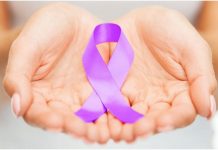SANUWAVE Health, Inc.,an emerging medical technology company focused on regenerative medicine, today reported financial results for the three months ended March 31, 2010 and provided a business update.
Christopher M. Cashman, President and CEO of SANUWAVE, said, "I’m extremely pleased with our solid first quarter performance and the progress we’ve made toward achieving our commitments for the remainder of the year and beyond. I am confident our efforts to drive evidence-based medicine, fuel innovation, develop a strong product pipeline and expand distribution position us well for sustained growth."
Highlights of the first quarter of 2010 include the following:
Patient enrollment was completed in March for the dermaPACE™ Phase III pivotal, randomized, double-blinded, sham-controlled, multicenter clinical trial comparing the Company’s Pulsed Acoustic Cellular Expression (PACE™) technology, utilizing the dermaPACE™ device, to sham control for the treatment of diabetic foot ulcers (DFU).
The paper titled "Extracorporeal Shock Wave Treatment in Ischemic Tissues: What is the Appropriate Number of Shock Wave Impulses?" was published in the February 2010 issue of the Journal of Reconstructive Microsurgery, and details the optimized number of impulses for improving blood flow in ischemic skin indications. The study found that the most effective protocols used 500 to 2,500 impulses per treatment. Florian Kamelger, M.D. of the Medical University of Innsbruck in Austria, one of the authors, said, "Partial skin flap necrosis caused by inadequate blood flow remains a significant problem in reconstructive surgery. For this reason, we investigated shock wave treatment as a means to increase blood flow to ischemic tissues. The results from this new study, and our team’s previously published studies, indicate that this technology significantly enhances epigastric skin flap survival at optimized energy and impulse settings."
The paper titled "Extracorporeal Shock Waves, a New Non-Surgical Method to Treat Severe Burns" appeared as an e-publication ahead of print in BURNS(www.burnsjournal.com), and detailed the successful use of PACE™ protocols with the dermaPACE™ device for the treatment of severe burns, including deep partial and full thickness burns. Between January and May 2009, patients with second- and third-degree burns received dermaPACE™ treatments of 500 impulses on days 3 and 5 after their injury. Burns healed uneventfully within 15 days for 12 out of 15 patients (80%), 2 patients required grafting and 1 patient was lost to follow up. No adverse side effects were observed.
A journal article titled "Extracorporeal Shock Wave Therapy for Nonunion of the Tibia" was published in the March 2010 issue of the Journal of Orthopedic Trauma. Based on the results of the study, the authors suggested that non-invasive Extracorporeal Shock Wave Technology (ESWT) applied with SANUWAVE’s Ossatron® device with one treatment session of 4,000 pulses followed by fracture immobilization resulted in an 80% rate of healing of the nonunion bone fractures (incomplete fracture healing) as assessed by both clinical and radiographic means.
Maria Siemionow, M.D., Ph.D., Director of Plastic Surgery Research, and Head of Microsurgery Training in the Plastic Surgery Department of Cleveland Clinic – and significant contributor to the pre-clinical work for dermaPACE™ – joined the Company’s Scientific Advisory Board. Dr. Siemionow gained worldwide acclaim in December 2008 when she successfully performed the first human facial transplant in the United States, and she is the first U.S. physician to receive Institutional Review Board approval for facial transplantation surgery.
The Company presented its strategic initiatives in the wound care, orthopedic and aesthetic market segments at the ROTH Capital Partners 22nd Annual OC Growth Stock Conference on March 17 and at the Sidoti & Company’s First 2010 Micro Cap Conference on January 11.
Mr. Cashman added, "Recent market research projects explosive growth for the tissue repair market, from $1.6 billion today to $15 to $20 billion in 15 years. The main focus of regenerative medicine in the near term will be on practical, targeted applications such as chronic wound care. With a $10 billion global advanced wound care market, which includes a $2 billion U.S. diabetic foot ulcer market, we eagerly anticipate the results of our Phase III pivotal diabetic foot ulcer study, and ultimately the planned commercialization of our dermaPACE™ device in the U.S. in 2011. We have also initiated discussions with widely recognized U.S. surgeons and wound care centers to begin the study of venous and complex chronic wounds, the largest portion of the $5 billion U.S. advanced wound care market."
Mr. Cashman continued, "In addition to wound care indications, we are aggressively pursuing the market for bone growth stimulation and chronic tendonitis regeneration. As such, we expect to introduce our orthoPACE™ device for musculoskeletal treatments to certain European markets during the second quarter of 2010. The orthoPACE™ has a compact, portable design and allows for treatments to be performed by a single operator in both the hospital and office settings. This combination of efficiency and proven outcomes across a broad range of treatment applications will allow us to position orthoPACE™ as the premium extracorporeal shock wave technology for musculoskeletal conditions in Europe."
First Quarter Financial Results
SANUWAVE’s financial results for the first quarter of 2010 reflect the Company’s ongoing research and development of PACE™ technology for the dermaPACE™ IDE wound care study, and development work for orthopedic and cosmetic uses. For the three months ended March 31, 2010, the Company reported a loss from continuing operations of $3.0 million, compared with a loss from continuing operations of $2.1 million for the same period in 2009. The higher loss is due primarily to a $0.3 million increase in research and development expenses related to ongoing clinical efforts, and a $0.4 million increase in general and administrative expenses primarily due to the increase in non-cash stock compensation expense for new grants of options, warrants and restricted stock to management and directors of the Company in September 2009.
For the first quarter of 2010 the Company reported a net loss of $3.0 million, or $0.24 per share, compared with a net loss for the first quarter of 2009 of $1.8 million, or $0.17 per share. The net loss for the first quarter of 2009 includes income from discontinued operations, net of tax, of $0.3 million related primarily to the veterinary product line sold in June 2009 for $3.5 million.
The Company ended the first quarter of 2010 with $1.1 million of cash and cash equivalents, compared with $1.8 million as of December 31, 2009. The Company’s net cash used by continuing operations was $1.7 million for the first quarter of 2010, compared with $2.3 million for the same period of 2009. The reduction in the use of cash from continuing operations in 2010 was primarily due to the timing of accounts payable payments.























